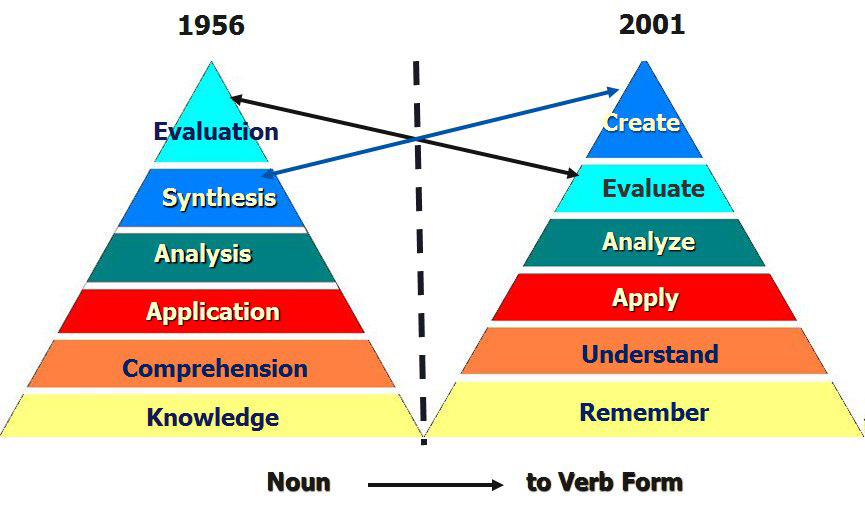What is Bloom’s Taxonomy?
Bloom’s taxonomy is a classification system used to define and distinguish different levels of human cognition—i.e., thinking, learning, and understanding.
Bloom’s taxonomy was originally published in 1956 by a team of cognitive psychologists at the University of Chicago. It is named after the committee’s chairman, Benjamin Bloom (1913–1999). The original taxonomy was organized into three domains: Cognitive, Affective, and Psychomotor.
Educators have primarily focused on the Cognitive model, which includes six different classification levels:
Knowledge, Comprehension, Application, Analysis, Synthesis, and Evaluation.

In the revised version, three categories were renamed and all the categories were expressed as verbs rather than nouns. The revised version is now Remembering, Understanding, Applying, Analyzing, Evaluating, and Creating, in that order.
In one sentence, Bloom’s Taxonomy is a hierarchical ordering of cognitive skills that can help teachers teach and students learn.
For example, Bloom’s Taxonomy can be used to:

